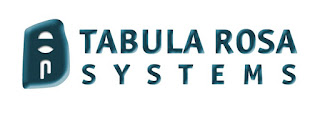Buy the books at
www.amazon.com/author/paulbabicki
====================================================
Have you ever looked up a word and experienced seeing marks on the letters or syllables which really didn't help you in understanding how a word is pronounced?
These are called diacritical marks. Below is a brief explanation on what are called individually and what they signify. This article should be able to help almost anyone in understanding pronunciation better!
+++++++++++++++++++++++++++++++++++++++++
|
Common Diacritical Marks
Diacritical markings are added to the top or bottom of a
letter to indicate appropriate stress, special pronunciation, or unusual sounds
not common in the Roman alphabet.
Acute accent: This diacritic (´) often indicates
primary stress (as in ópera or operátic) in many English dictionaries.
Additionally, it indicates spelling in some languages such as Spanish Qué? ("What?").
The acute accent has its base on the left-hand side, but
its top tilts toward the right. Contrast with the grave accent, below.
Grave accent: This diacritic (`) often indicates
secondary stress (as in óperàte) in many English
dictionaries. Additionally, it indicates spelling in some
languages, such as French père. Note that the acute accent has its base
on the right-hand side, but its top tilts toward the left. Contrast with the
acute accent, above.
Cedilla: The cedilla can be attached to the
bottom of the letter c in French-loan words indicates a "soft"
c.The word façade is one example. In Romanian, the cedilla
indicates a -sh sound when it is stuck on the bottom of a letter s or
a "ts" sound (as in tse-tse fly) when the diacrticial
is attached to the bottom of the letter t.
Circumflex accent: This diacritic (ˆ) often indicates
reduced primary stress. Algeo offers as an example élevàtor ôperàtor.
French writers also use this mark in writing words such as rôle or île.
Umlaut (also called dieresis): A
superposed pair of dots indicating vowel quality in Germanic languages. In
older English spelling. the umlaut can also indicate that each vowel is
pronounced separately rather than blended together. (For example, coöperate and
preëminent each have four syllables, but some readers might theoretically blend
the vowels oo and ee together and pronounce these words
trisyllabically without this visual marker.)
Tilde: In Spanish loan words, the tilde
indicates a /y/ sound added to a consonant. An example might be cañon or
piña colada. In Portuguese loan words, the tilde indicates nasalized
vowels, such as in São Paulo. Swedish and Norse words may also use the
circle marking above certain vowels (å), and Czechoslovakian words may use the hac&ek
a wedge-shaped symbol to indicate a "ch" sound as in English chill.
|
Good Netiquette And A Green Internet To All! =====================================================================
Tabula Rosa Systems - Tabula Rosa Systems (TRS) is dedicated to providing Best of Breed Technology and Best of Class Professional Services to our Clients. We have a portfolio of products which we have selected for their capabilities, viability and value. TRS provides product, design, implementation and support services on all products that we represent. Additionally, TRS provides expertise in Network Analysis, eBusiness Application Profiling, ePolicy and eBusiness Troubleshooting.
We can be contacted at:
===============================================================In addition to this blog, Netiquette IQ has a website with great assets which are being added to on a regular basis. I have authored the premiere book on Netiquette, “Netiquette IQ - A Comprehensive Guide to Improve, Enhance and Add Power to Your Email". My new book, “You’re Hired! Super Charge Your Email Skills in 60 Minutes. . . And Get That Job!” has just been published and will be followed by a trilogy of books on Netiquette for young people. You can view my profile, reviews of the book and content excerpts at:
www.amazon.com/author/paulbabicki
Anyone who would like to review the book and have it posted on my blog or website, please contact me paul@netiquetteiq.com.
In addition to this blog, I maintain a radio show on BlogtalkRadio and an online newsletter via paper.li.I have established Netiquette discussion groups with Linkedin and Yahoo. I am also a member of the International Business Etiquette and Protocol Group and Minding Manners among others. I regularly consult for the Gerson Lehrman Group, a worldwide network of subject matter experts and I have been contributing to the blogs Everything Email and emailmonday . My work has appeared in numerous publications and I have presented to groups such as The Breakfast Club of NJ and PSG of Mercer County, NJ.
Additionally, I am the president of Tabula Rosa Systems,
a “best of breed” reseller of products for communications, email,
network management software, security products and professional
services. Also, I am the president of Netiquette IQ. We are currently developing an email IQ rating system, Netiquette IQ, which promotes the fundamentals outlined in my book.
Over the past twenty-five years, I have enjoyed a dynamic and successful career and have attained an extensive background in IT and electronic communications by selling and marketing within the information technology market.


.jpg)






